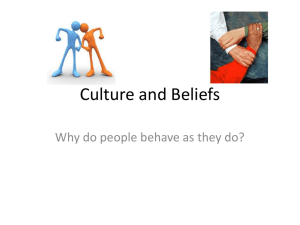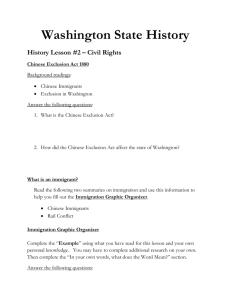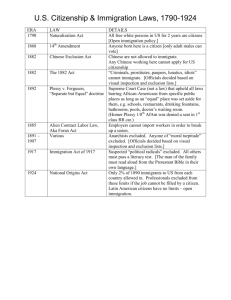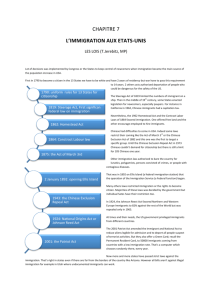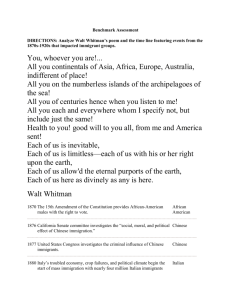Who Decides? ISSUE ANALYSIS There are a number of different
advertisement
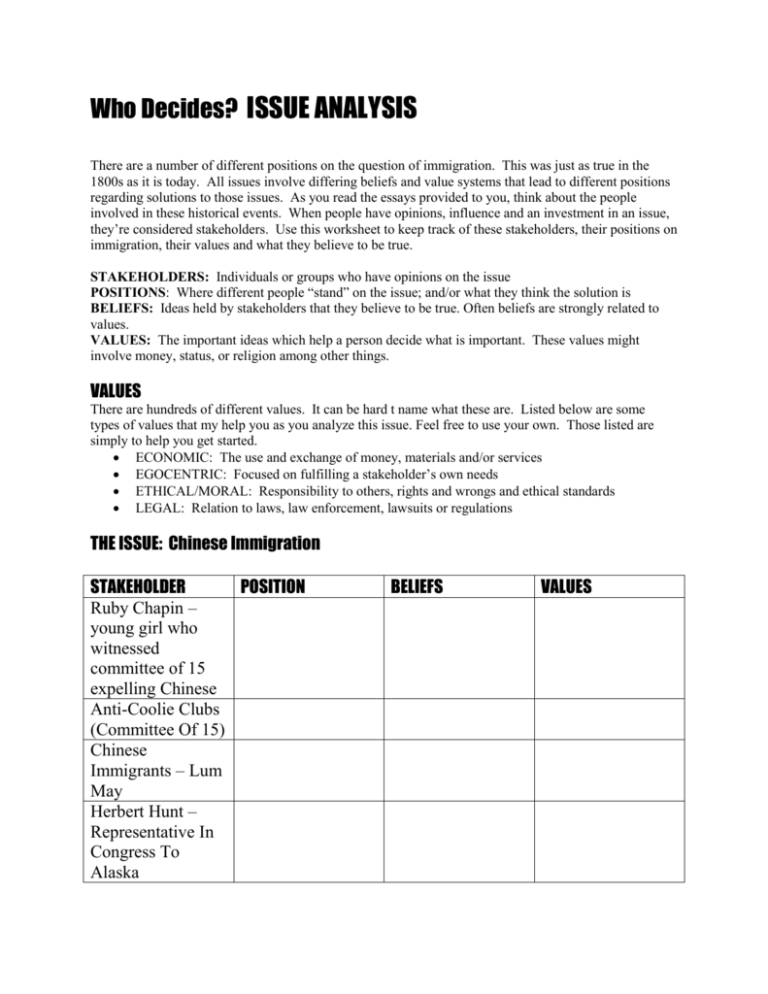
Who Decides? ISSUE ANALYSIS There are a number of different positions on the question of immigration. This was just as true in the 1800s as it is today. All issues involve differing beliefs and value systems that lead to different positions regarding solutions to those issues. As you read the essays provided to you, think about the people involved in these historical events. When people have opinions, influence and an investment in an issue, they’re considered stakeholders. Use this worksheet to keep track of these stakeholders, their positions on immigration, their values and what they believe to be true. STAKEHOLDERS: Individuals or groups who have opinions on the issue POSITIONS: Where different people “stand” on the issue; and/or what they think the solution is BELIEFS: Ideas held by stakeholders that they believe to be true. Often beliefs are strongly related to values. VALUES: The important ideas which help a person decide what is important. These values might involve money, status, or religion among other things. VALUES There are hundreds of different values. It can be hard t name what these are. Listed below are some types of values that my help you as you analyze this issue. Feel free to use your own. Those listed are simply to help you get started. ECONOMIC: The use and exchange of money, materials and/or services EGOCENTRIC: Focused on fulfilling a stakeholder’s own needs ETHICAL/MORAL: Responsibility to others, rights and wrongs and ethical standards LEGAL: Relation to laws, law enforcement, lawsuits or regulations THE ISSUE: Chinese Immigration STAKEHOLDER POSITION Ruby Chapin – young girl who witnessed committee of 15 expelling Chinese Anti-Coolie Clubs (Committee Of 15) Chinese Immigrants – Lum May Herbert Hunt – Representative In Congress To Alaska BELIEFS VALUES
